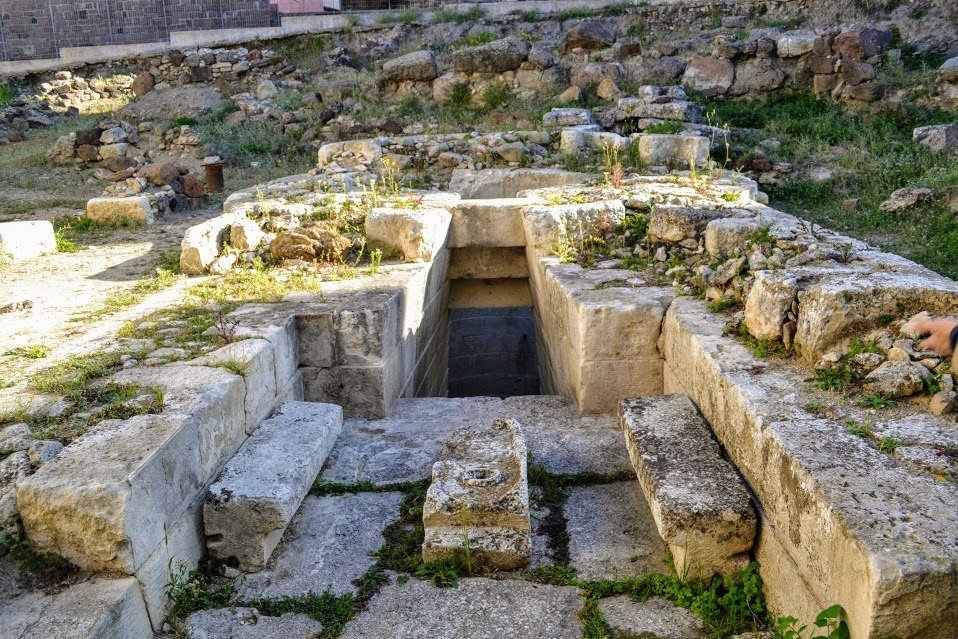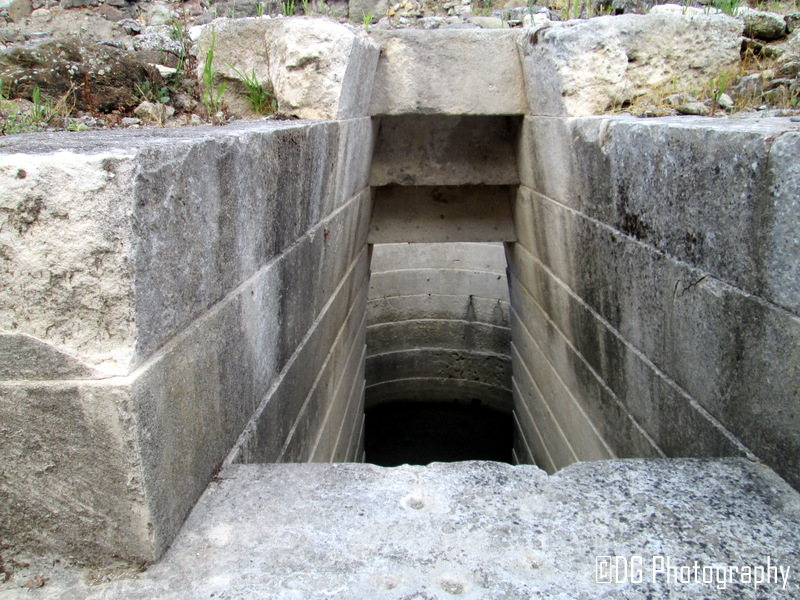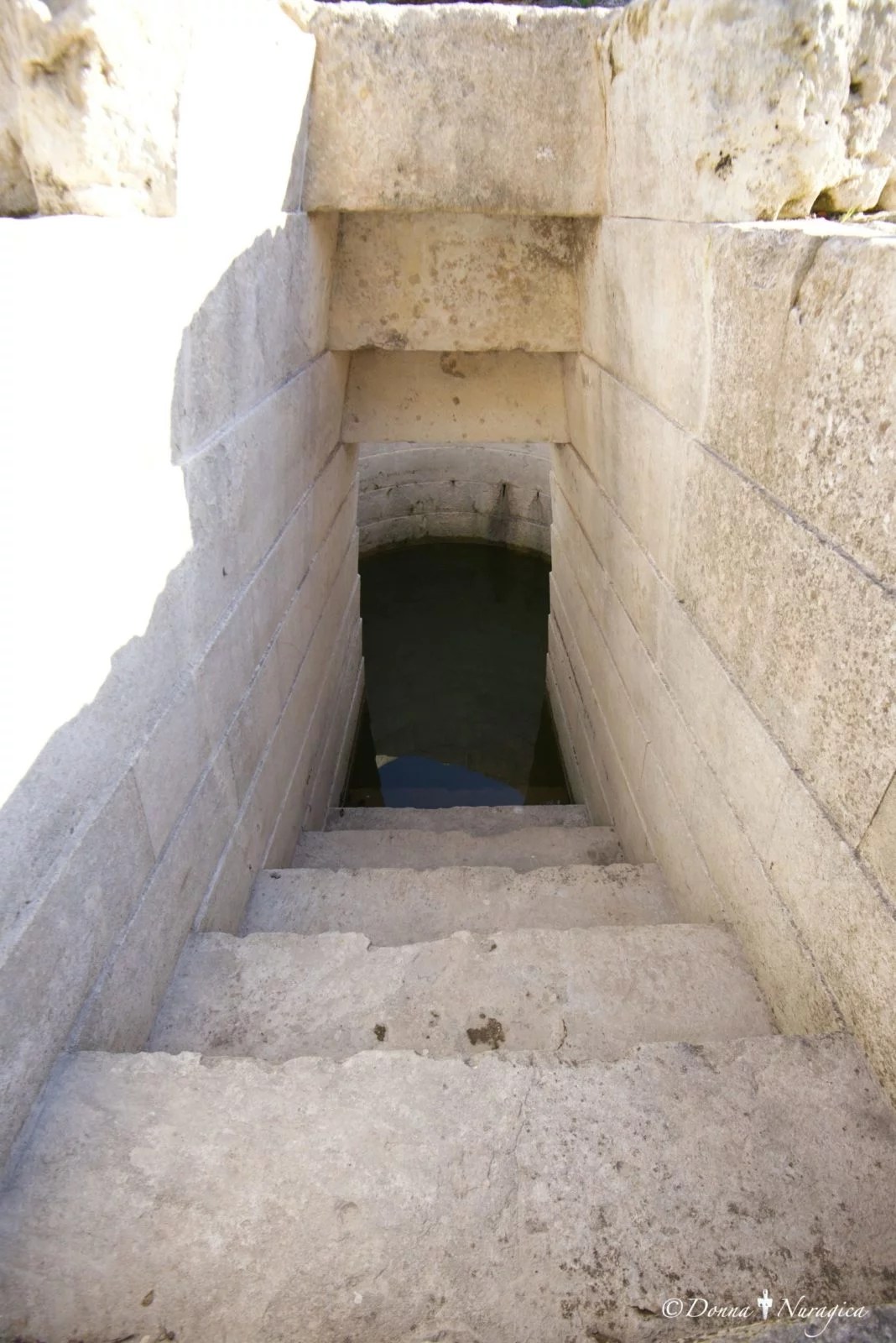The Sacred Well of Predio Canopoli, accidentally uncovered in 1923 during a search for water in Perfugas, Sardinia, stands as a fascinating relic of the ancient Nuragic civilization. Dating back over 3,000 years to the Bronze Age, this monumental site provides an extraordinary glimpse into a culture that thrived on the island long before recorded history. The well, with its sophisticated design and rich spiritual significance, serves as a testament to the ingenuity of the Nuragic people, one of the most enigmatic and influential ancient societies of the Mediterranean.
Engineering and Spirituality: The Well’s Design
The Sacred Well of Predio Canopoli is a striking example of the Nuragic people’s advanced engineering and spiritual practices. Constructed with remarkable precision, the site features a rectangular limestone atrium, leading to an eight-step staircase that descends into an underground chamber. This chamber, believed to have contained water, was likely central to the religious and ceremonial practices of the ancient Sardinians.
.jpg/1024px-Perfugas_-_Pozzo_sacro_di_Predio_Canopoli_(6).jpg)
Water held profound spiritual significance for the Nuragic people, representing life, fertility, and purification. The well’s design reflects this belief, as it combines both functional and spiritual elements. The architectural precision and purposeful design of the well highlight the Nuragic civilization’s expertise in blending engineering with religious symbolism, creating a sacred space where the elements of nature and divine forces intersected.
Cultural and Religious Significance
The Sacred Well of Predio Canopoli was not merely a functional water source but a central component of the spiritual and social life of the Nuragic people. Water, revered as a sacred substance, was likely used in communal rituals and ceremonies that celebrated fertility and life cycles. The presence of various artifacts at the site—including pottery, offerings, and tools—suggests that the well was an important site for religious practices. These artifacts provide a window into the daily lives, customs, and beliefs of the Nuragic people, who, due to the absence of written records, remain largely mysterious to historians.

In addition to the spiritual significance, the well’s centrality to the community is underscored by its carefully crafted design, suggesting it was a place of gathering, ritual, and connection to the divine. The discovery of these ritualistic offerings and objects underscores the sacred role of water in the culture and highlights the enduring legacy of the site as a place of spiritual convergence.
The Evolution of the Site Through Time
Over the centuries, the Sacred Well of Predio Canopoli evolved and adapted to the changing cultural and religious influences in Sardinia. As the Nuragic civilization began to transition, a megaron-style temple was constructed near the well, marking a shift in religious practices. This temple reflects the changing dynamics of worship and the increasing complexity of religious architecture in the region. The architectural style of the megaron temple provides important evidence of how sacred spaces and practices evolved over time, from simple ritual sites to more elaborate structures.

When the Romans arrived in Sardinia, they too utilized the area around the well, constructing Roman-era houses in close proximity to the site. The continued use of the well by successive cultures adds a fascinating layer to its history, as the site was adapted and reinterpreted by each new civilization that settled in the region. This continuous layering of cultures and practices creates a rich archaeological narrative, providing invaluable insights into Sardinia’s diverse and evolving history.
A Legacy of Sardinia’s Ancient World
Today, the Sacred Well of Predio Canopoli remains a profound symbol of Sardinia’s rich and multifaceted ancient past. It offers historians, archaeologists, and visitors alike a rare and intimate glimpse into the spiritual and cultural practices of the Nuragic civilization. Through the well, we can begin to understand the deep connection that the ancient Sardinians had with the land, water, and the divine forces they believed governed their world.

The Sacred Well not only illuminates the ancient history of Sardinia but also serves as a reminder of the continuity of human expression, from the distant past to the present. It stands as a testament to the enduring legacy of the Nuragic people and their influence on subsequent cultures, inviting us to reflect on the lives, beliefs, and practices of those who lived on this island thousands of years ago.
By preserving both the physical remnants and the spiritual significance of the well, the Sacred Well of Predio Canopoli continues to inspire research, exploration, and admiration. Its layered history, shaped by the hands of many different civilizations, offers a timeless connection to the ancient world, providing us with a portal into the lives of those who lived and worshipped here long ago.

.jpg/1024px-Perfugas_-_Pozzo_sacro_di_Predio_Canopoli_(6).jpg?w=1024&resize=1024,1024&ssl=1)